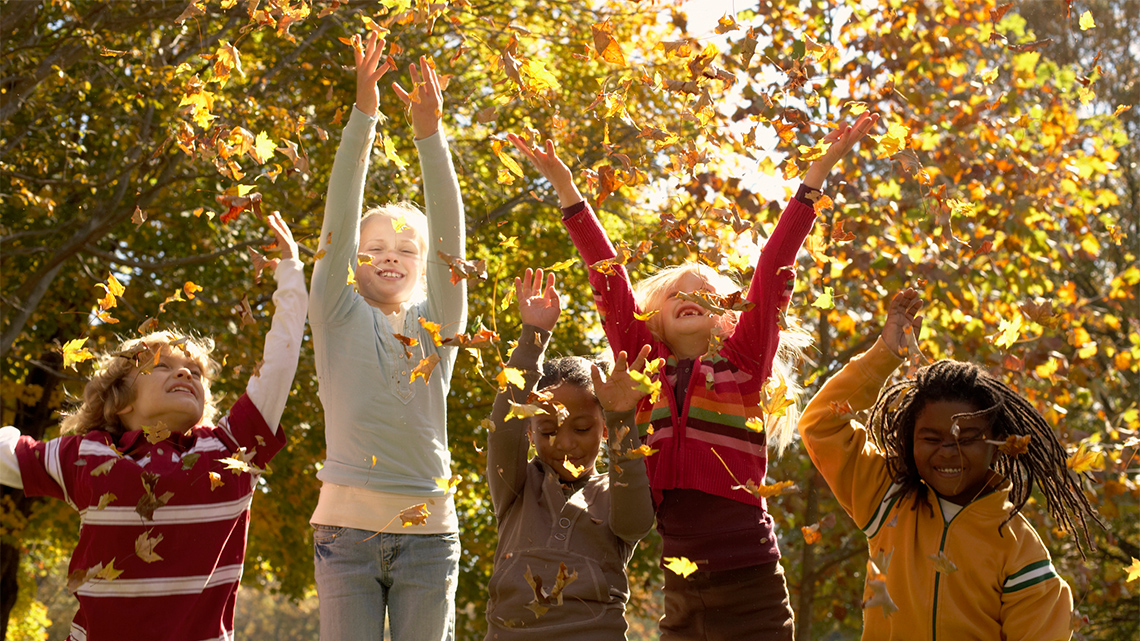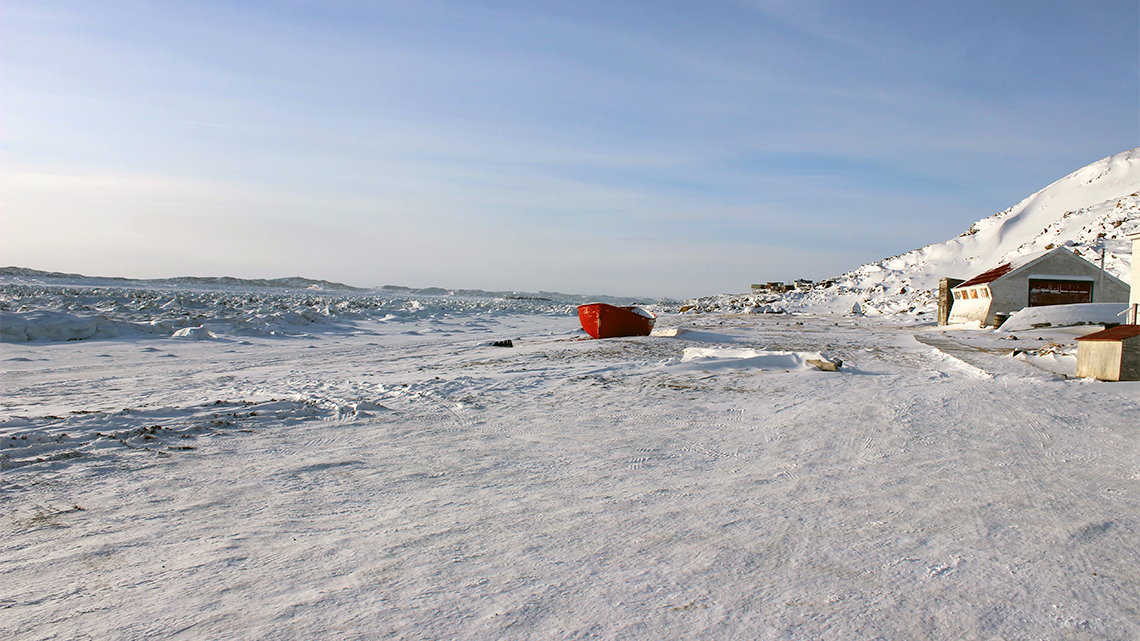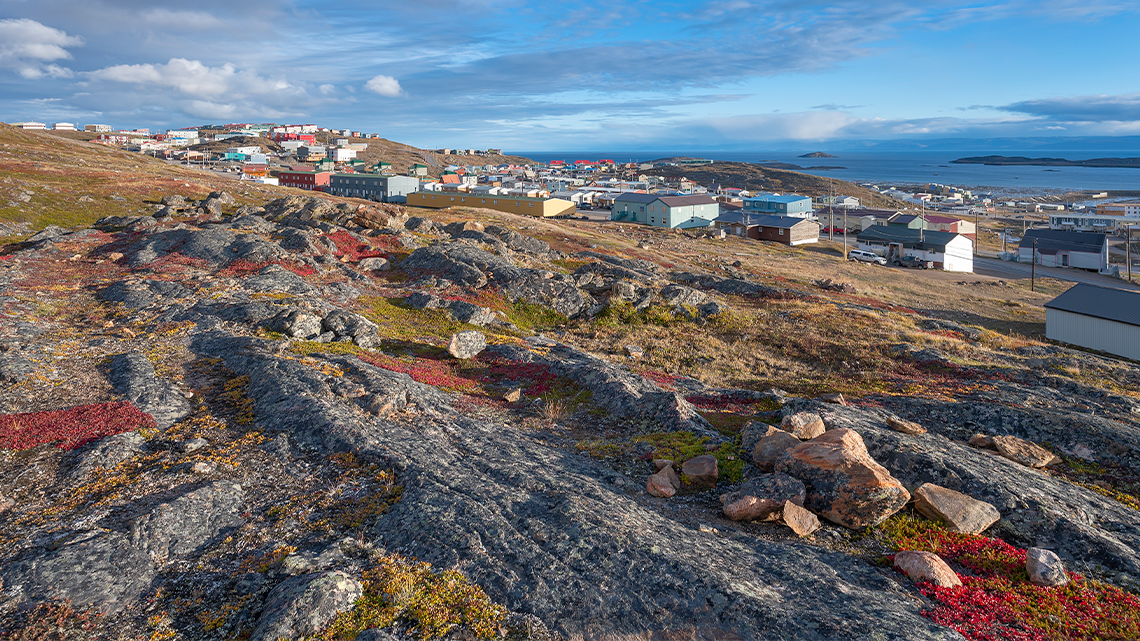Minds On
Changing seasons
In Canada, there are four seasons. The temperatures and amount of rain or snow is not the same everywhere, but each season brings with it a change in weather. Explore the following images and descriptions of each season.
Each season has its own characteristics that make it unique, but can also pose some interesting challenges.
- What are some challenges that you might face with each new season?
Press ‘Hint’ to access a hint about seasonal challenges.
Let's think of some other seasonal challenges. Complete the Seasons Challenge Brainstorm Chart in your notebook or use the following fillable and printable document.
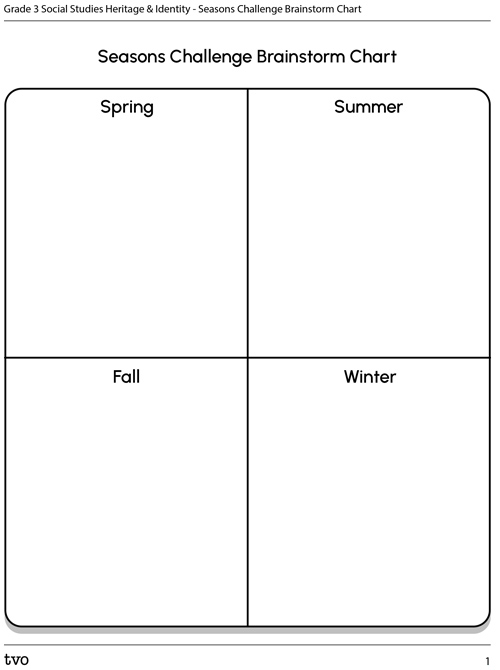
Press the Activity button to access the Seasons Challenge Brainstorm Chart.
Activity(Opens in a new tab)Once you have filled out the chart, pick one season to focus on.
Now, try and come up with solutions to the challenges posed by the season. If possible, you can brainstorm with a partner.
Press ‘Hint’ to access an example of a solution to a seasonal challenge.
Action
Task 1: Approaching environmental challenges
Technologies we have today can help people face environmental challenges here in Canada. Some examples are indoor heating, air conditioning, and snow tires.
What did people living during the late 1700s and early 1800s do to approach these challenges?
First Nations, Inuit, and Métis peoples are the Indigenous peoples of Canada. They have lived on this land for thousands of years and have survived and thrived in even the harshest of environments.
Consider the Inuit who live in the Arctic and Northern areas of what is now known as Canada. Up north, it is very cold, icy, and sunny, and this land is nearly impossible to farm on.
So, how have the Inuit survived so well?
Brainstorm
Environmental challenges
Explore these two images of the northern landscape in the winter months and the summer months. As you explore, think about what kinds of challenges this landscape might bring.
Complete the Northern Environment Challenges Chart in your notebook or use the following fillable and printable document. The chart has been started for you!
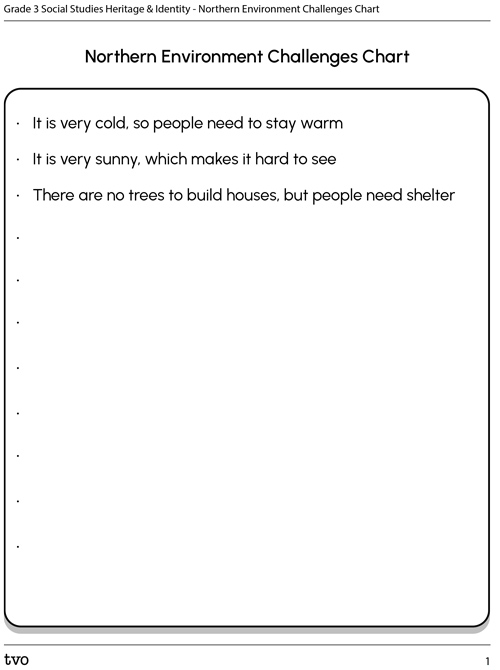
Press the Activity button to access the Northern Environment Challenges Chart.
Activity(Opens in a new tab)How do you think the Inuit survived with these challenges they faced?
The Inuit were very innovative and came up with very creative solutions to ensure their survival then and all the way to the present day. They built tools for hunting and trapping. They made their own clothes and boots using skins and fur from the animals they hunted. They built temporary homes because they travelled often to hunt for their food. In the summer, they built tents made of driftwood covered in animal skin, and in the winter, they built homes made of snow.
Press ‘Did you know?’ to learn about an invention that the Inuit created.
Did you know that the Inuit created snow goggles?
To see in the very bright sun, Inuit peoples made snow goggles to reduce the amount of sunlight reflecting off the snow. They were often made out of ivory, bone, or sometimes wood.
 Did you know that snow goggles are
still used today in many different winter activities?
Did you know that snow goggles are
still used today in many different winter activities?
Select the correct answer from the choices provided.
Task 2: Challenges for settlers
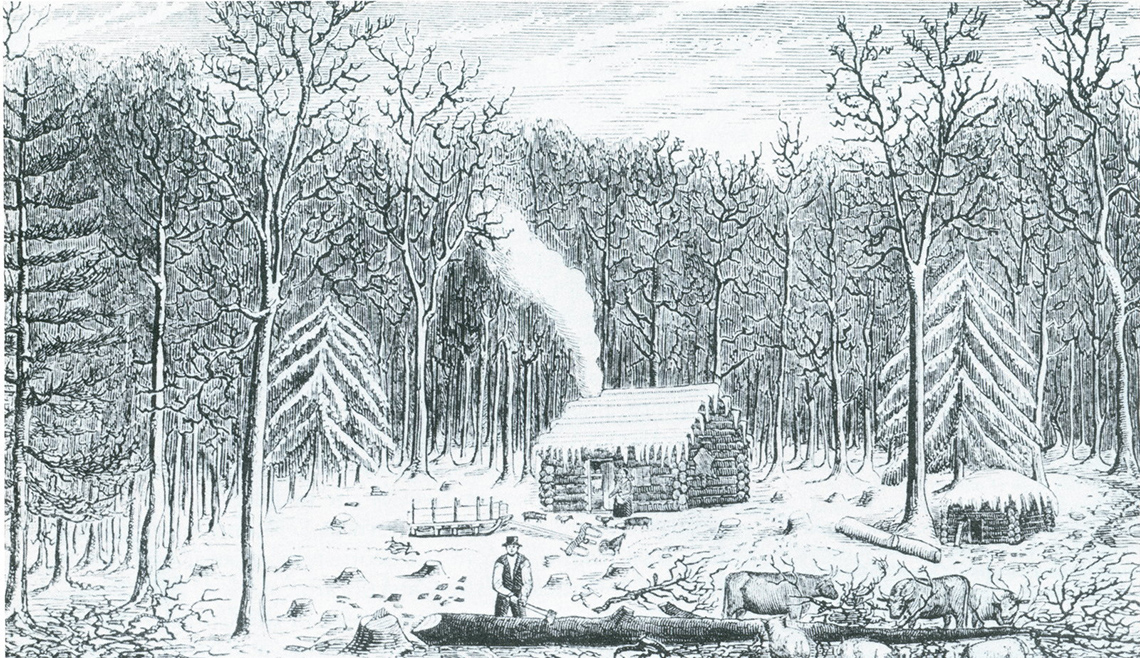
When settlers came to Canada, they had to learn how to live on completely new land and survive in very different environments than they were used to in Europe. At times, the relationship between European settlers and Indigenous peoples was mutually beneficial (this means it was good for both groups) but at other times the relationship was not good for the Indigenous peoples. The settlers did not always treat Indigenous peoples with respect and were not always peaceful.
Indigenous peoples were able to help settlers adjust to the new land and could share their knowledge and expertise on how to build homes, use the plants to help heal the sick, hunt, fish, harvest, and more. The settlers offered useful resources, such as horses, metal knives, and other goods to Indigenous peoples. They made agreements, called treaties, that outlined how they would get along and share the lands together peacefully and respectfully. This was a promise between nations that was meant to last forever. There are still treaties in Canada today.
The following is a short journal entry of a young child who came to Canada as a European settler in the territory of Ontario.
Take note of how this person describes the environment and the temperatures in the area, as well as any challenges they had to face.
Settler’s diary
Today, I woke up and our home was freezing! There was not enough of a fire in our fireplace to keep us warm. I hid under the covers until my dad came to wake me up to start my chores. After my porridge, I went outside and cut some wood for later tonight so it will be warmer tomorrow morning. The cold made my fingers freeze.
My dad spent all morning trying to remove the snow from in front of the house so we wouldn’t slip and so he could get the wagon out to the main road. He was hoping to head to our neighbours to help them with the building of their shed. There is not a lot of space between the trees to build, so I am not sure where it will go.
I bundled up and headed into the woods to find kindling for tonight’s fire. We are so lucky that our community got help from those who already lived here. They taught us how we could safely get to the river through the woods, what plants were safe to eat and which weren’t, and how to only take a few strips of bark from one tree at a time.
As a thank you, we gave them some metal pots and a hunting knife that we brought with us. There is something I keep thinking about. This community have lived on this land for a long, long time and did not need to cut down many trees to build their communities.
I am sad that these people are not here anymore to share their knowledge with us.
- What challenges did the weather pose for these settlers?
- What challenges did the environment pose for these settlers?
- How did the First Nations community in that area help them when they first arrived?
Press ‘Answer’ to access answers about the settlers.
- The cold made it hard to cut wood. Their house was freezing cold, and the snow made it hard for their dad to get the wagon out of the yard.
- There was not a lot of open space to build on; the forest was thick.
- The First Nations community showed them how to travel safely to the water, how to pick proper plants that were safe to eat, and how to safely take bark off trees to build. They also taught them that you don’t need to remove many trees from the forest to be able to live.
Reflection question

Based on what you have learned, why do you think this First Nation community may have left when settlers began creating communities?
Press ‘Hint’ to access a hint about why First Nations communities were leaving.
Consolidation
Your environment

As we have explored, there were challenges posed by the environment and by the climate for different communities living in Canada.
- What is the environment like where you live?
- What are some challenges that people have needed to overcome in order to survive where you are now?
Press ‘Hint’ to access a hint about challenges you might face today.
How does your life today and the environmental and seasonal challenges you face compare to those who were living in Canada long ago?
Choose the information you learned about the Inuit community or the settler community, and compare the challenges that were faced with your community’s challenges today.
Complete the Overcoming Challenges Venn Diagram in your notebook or use the following fillable and printable document.
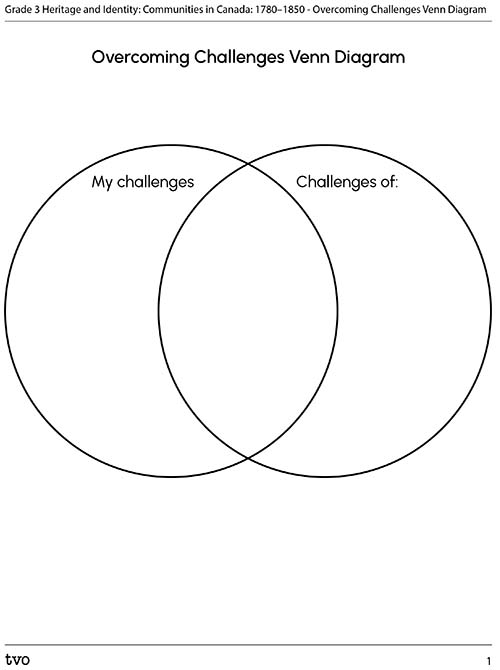
Press the Activity button to access the Overcoming Challenges Venn Diagram.
Activity(Opens in a new tab)Reflection
How do you feel about what you have learned in this activity? Which of the next four sentences best matches how you are feeling about your learning? Press the button that is beside this sentence.
I feel...
Now, record your ideas about your feelings using a voice recorder, speech-to-text, or writing tool.
Press ‘Discover More’ to extend your skills.
Discover More


